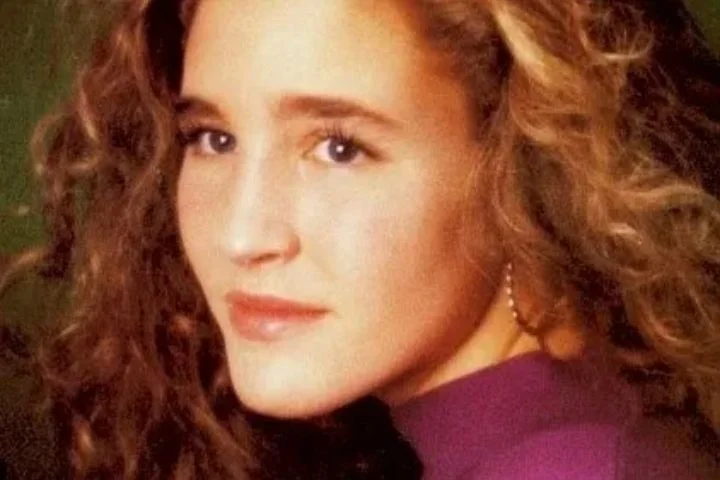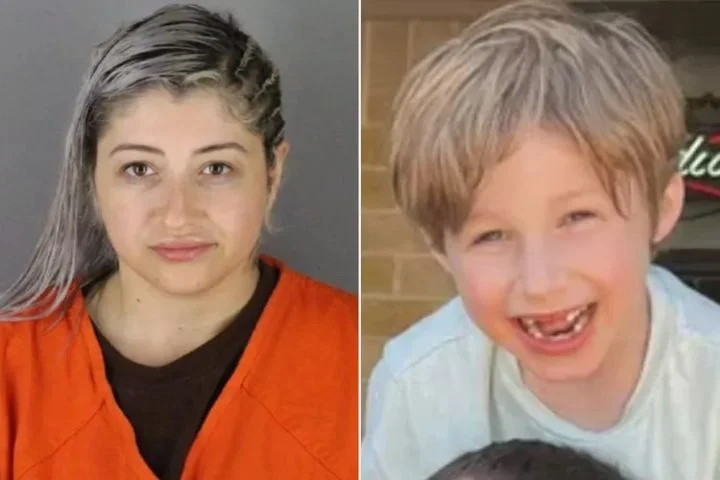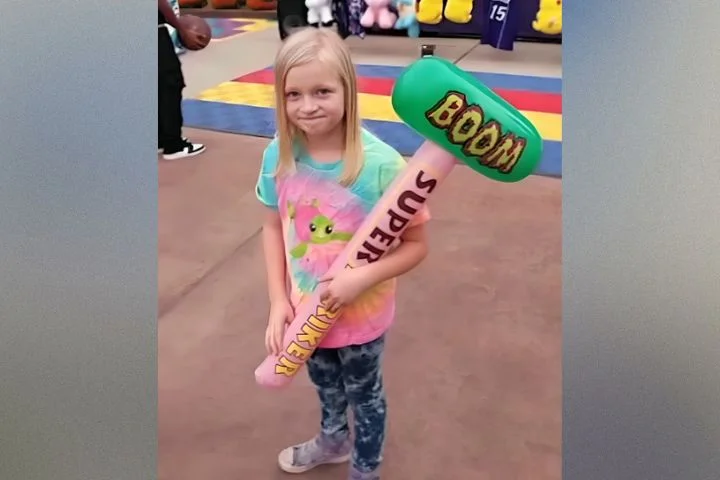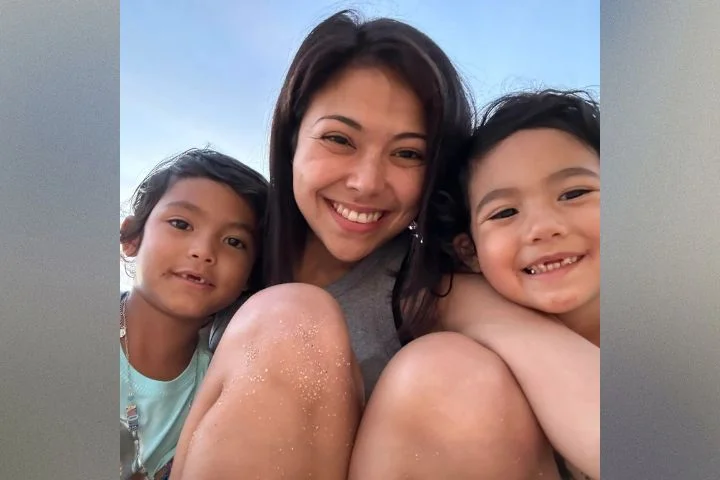Tricia Reitler was ready to take a break from the research paper she was writing. The 19-year-old, a freshman at Indiana Wesleyan University in Marion, Indiana, left her dorm room shortly before 8:00 pm on the evening of Monday, March 29, 1993. She made the half-mile walk to Reliable Drug Store on the corner of 45th Street and Adams Street, where she purchased a Faygo root beer. She was alone when she left the store around 8:00 pm, but she never made it back to her dorm room and was never seen again.
For Tricia’s roommate, Belinda Berry, the situation was horrifying. She had worried about Tricia walking around at night by herself, but Tricia had always insisted that she would be fine. “She was always a person who liked to be by herself. She was very, very independent. She stayed to herself a lot.”
When Tricia didn’t come back to her dorm room, Belinda knew something was wrong and called Tricia’s parents at their home in Olmsted Township, Ohio. Gary Reitler would later recall that he had felt something was wrong even before he got the call that his daughter was missing. “The phone call came a little bit after midnight. I wasn’t feeling well that night, just kind of lying on the couch.” He and his wife, Donna, immediately prepared to make the four-hour drive from their home to Indiana Wesleyan University.
Tricia’s residence hall director had called police early Tuesday morning when she learned that the student had failed to return from the store, and the search effort was in full swing by the time Tricia’s parents arrived on campus. Officers from the Marion Police Department walked along the route Tricia would have taken from the store to campus, hoping to find some clue as to what had happened to her. They were joined by hundreds of volunteers, many of them Tricia’s college classmates. About halfway along Tricia’s assumed route, near Carter Elementary School, they made a disturbing discovery: bloodstained clothing matching the description of what Tricia had been wearing the previous night.
Once the clothing was confirmed to be Tricia’s, the search for her kicked into high gear. Police and volunteers scoured the area for any clues to her whereabouts, expanding the search radius each day over the course of the following week. Deputy Police Chief Vern Owensby admitted, “We are working on the assumption that she was abducted and some type of foul play was involved.”
The search for Tricia was one of the largest the small city of Marion had ever seen. Divers from the Marion Fire Department searched ponds, volunteers scoured parks and abandoned buildings, and K9 teams from Grant County and Blackford County combed through the area where Tricia’s clothing had been found. All searches came up empty.
By Saturday, there were more than 400 people actively searching for Tricia. Detectives with the Marion Police Department, assisted by investigators from the Grant County Sheriff’s Office, worked around the clock to sift through hundreds of tips, but they were unable to develop any substantial leads. Although they were frustrated by the lack of progress, they tried to remain optimistic. Grant County Sheriff John Lawson told reporters, “It’s just a matter of time. Time is on our side.”
Sheriff Lawson said that police were determined to find Tricia and return her safely to her loved ones. “Seeing in the paper the picture of her family and knowing they are deprived of the right to know where she is…that is enough to drive a policeman to spend hours working.” Detective Lisa Franklin was no exception. Her supervisor finally forced her to go home on Monday after she worked 26 hours straight. She went home for a few hours and then immediately rejoined the search for Tricia.
A massive physical search was conducted on April 10, 1993, with hundreds of volunteers meeting on Indiana Wesleyan University’s campus before spreading out across the city of Marion. A canine team from Colorado also joined the search, hoping to find something that had been missed during the initial investigation. Unfortunately, searchers didn’t uncover any new clues, leading detectives to once again appeal to the public for information. Officials believed that someone in the area had to have seen something the night Tricia went missing, and they begged them to call police.
As the investigation into Tricia’s disappearance entered its second week, the search was expanded into northern Madison County and parts of Boone County. Although searchers initially concentrated on areas close to the Grant County line, they would eventually cover a 55-square-mile area, combing through barns, creeks, ditches, and fields. Horses were used to search along the banks of the Mississinewa River. They found no clues to Tricia’s whereabouts.
Tricia’s parents struggled to deal with her sudden disappearance. Their fears were magnified by the fact that they kept receiving prank calls at their home in Olmsted Township from people claiming to be Tricia or saying they knew where she was. The calls were reported to the Olmsted Township Police Department; on April 14, 1993, they arrested four juveniles and charged them with harassment.
Officials conducted another large-scale search for Tricia on April 24, 1993, this time near Fowlerton, Indiana. A police spokesperson told reporters that several pieces of potential evidence were found, but they needed to be submitted for forensic testing to see if they were related to the disappearance or not.
By May, Tricia’s loved ones were growing increasingly desperate to find her. Her younger sister, Melissa Reitler, was preparing to graduate from high school and had expected Tricia to be there to see her accept her diploma. Melissa also noted that she had planned to attend Indiana Wesleyan University in the fall and room with her older sister, but those plans were now on hold. Although she had been offered a scholarship to the university, she was reconsidering her choice of schools. “It would be too hard, every day would be a reminder. I know I couldn’t go there and room with anyone else.”
Donna admitted to reporters that the absence of her oldest child was hard on the family. “Life isn’t normal for us. We can’t put [the disappearance] aside…sometimes the pain is so great, it’s hard to breathe.”
On May 24, 1993, Tricia’s family announced that they were offering a $5,000 reward for anyone with information leading to Tricia’s whereabouts. “We want her returned to us one way or the other. There’s somebody who saw something or somebody who knows something. She didn’t just vanish.” Over the next year, donations would pour in, raising the reward fund to more than $40,000.
Deputy Chief Owensby admitted that investigators still had no idea what had happened to Tricia, but they were assuming the worst. “We are going back over all the people we’ve talked with to see if we could possibly develop a definite suspect…but at this point, we don’t even have a body.”
Months went by and Tricia’s family seemed to accept the fact that she likely wasn’t going to come home alive. Her parents looked into purchasing a burial plot and a headstone for her while still trying to hold onto a sliver of hope that she would be okay. Donna noted, “This has been hard to believe…she was invincible, so strong, so sure of herself and so smart. I just can’t believe that she couldn’t have gotten away.”
In March 1994, almost exactly one year after Tricia was last seen, five children playing under a railroad bridge found a human skull that police suspected belonged to Tricia. Her parents were notified of the gruesome find and waited in agony for identification to be made. After examining the skull, a forensic anthropologist determined that it did not belong to their daughter. Tricia was still missing.
To mark the grim first anniversary of Tricia’s disappearance, students and faculty at Indiana Wesleyan University held a 36-hour prayer vigil, with people signing up for 15-minute time slots to pray for their missing classmate. Her family held their own vigil in Ohio, still clinging to the hope that she could still be alive. Donna noted, “I believe that Tricia is not here. But if she is still alive, Tricia expects us to find her. We can never give up.”
Despite the extensive year-long investigation, detectives had little progress to report. They did have a potential suspect — a fellow student who was later arrested and convicted of an unrelated theft charge — but they had no solid evidence linking him to Tricia’s disappearance. Marion Police Lt. Jay Kay told reporters, “We have interviewed him and consider him a suspect. But it’s all circumstantial. I won’t make any other comment.”
In November 1994, a man who was arrested on an attempted abduction warrant from Illinois was questioned in Tricia’s case. Larry Hall, a 33-year-old suspected of ki*lling multiple people, initially confessed to Tricia’s mu*rder but recanted almost immediately. Deputy Chief Owensby admitted that all of the information Hall initially told investigators could have been gleaned from newspaper articles about the case; there was no solid evidence connecting Hall to Tricia’s disappearance.
Hall’s van was processed for potential evidence and investigators found articles and flyers about Tricia’s disappearance, as well as rope and a knife. They found no blood or fiber evidence tying him to Tricia; although he was never charged in connection with her disappearance, he remained on the short list of suspects.
Another potential suspect was Tony Searcy, who had been a student at Indiana Wesleyan University when Tricia went missing. By 1994, Searcy was in prison on unrelated theft charges; he insisted that he had nothing to do with Tricia’s disappearance and pointed out that another man, Larry Hall, had confessed to the crime. “As God is my witness, may he take my life if I’m lying, I’ve had nothing to do with the disappearance of Miss Reitler, neither do I know who has.”
In June 1995, Larry Hall was convicted of the September 1993 abduction and mur*der of 15-year-old Jessica Roach. He was sentenced to life in prison for Jessica’s death, but continued to maintain that he was innocent. He was also adamant that he had nothing to do with Tricia’s disappearance.
By 1996, investigators admitted that they had exhausted all leads in Tricia’s case and still had no idea what had happened to her. With no physical evidence linking either of their potential suspects to the crime, the case slowly went cold. Still, the Reitlers praised the dedicated detectives who continued to search for their daughter, especially Lt. Jay Kay. “I can’t even tell you my feelings for Jay,” Donna admitted. “I know he is still looking. And he probably will look until the day he dies. I can’t even tell you what a comfort that is.”
For Tricia’s loved ones, the uncertainty about what had happened was the worst part. They knew she was most likely dead or being held somewhere against her will, as she would have contacted them if she had a way to get to a phone. But the fact that her body had never been found bothered Donna. “I want to bring her home. I want a place to put flowers.”
In the decades since Tricia was last seen, there have been several potential suspects but never enough evidence to charge anyone in her disappearance. Her parents continue to hope that her body will be found or that her kil*ler will confess so they can have some form of closure. In March 2022, Gary told reporters, “We had her for 19 years. She’s been missing for 29 years…that’s basically a lifetime.”
Donna believes there are still people out there with information that could solve the case. “I know there is somebody out there that has the answers that we desperately seek.” Gary agrees, but notes, “To me, it’s amazing that it’s been 29 years, because secrets are hard to keep for this time period.”
Detectives insist that Tricia’s case isn’t cold; they continue to receive sporadic tips and follow up on each one. At this point, however, it is likely that the only way they will be able to obtain justice for Tricia is if someone comes forward and tells them what happened to her on that night 30 years ago. Donna is even ready to forgive the k*iller. “We’re not looking for revenge. We’re beyond that. We just want to bring her home. It would just mean so much to all of us.”
Tricia Lynn Reitler was just 19 years old when she vanished from Marion, Indiana in March 1993. She was a freshman psychology major at Indiana Wesleyan University, where she got great grades and was popular with her classmates. Police believe that Tricia was a victim of foul play, but her body has not been found and no one has been charged in relation to her disappearance. Tricia has brown hair and blue eyes, and at the time of her disappearance, she was 5 feet 4 inches tall and weighed 105 pounds. The clothing she was wearing when she vanished was later found, but her watch, a silver ring, and a leather strap necklace she always wore have never been recovered. If you have any information about Tricia, please contact the Marion Police Department at 765–662–9981 or the Grant County Sheriff’s Office at 765–662–9836.






